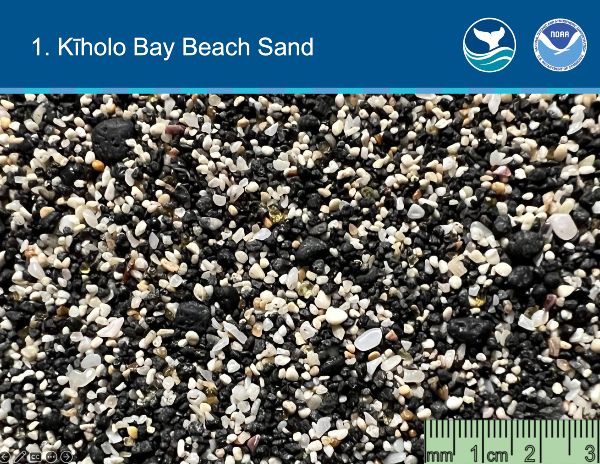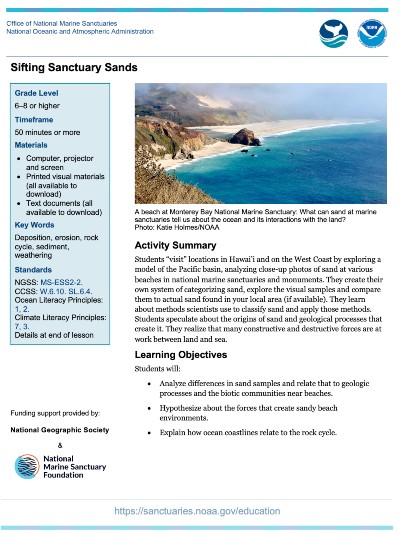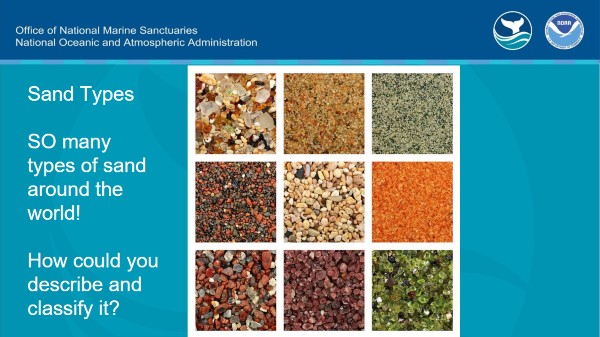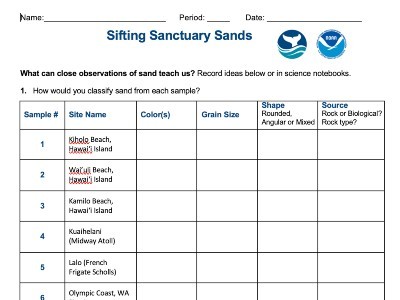Exploring Ocean Mysteries is a curriculum that makes it easy to teach the seven Ocean Literacy Principles while meeting NGSS, Common Core and Climate Literacy standards. Lessons are targeted to middle grades and adaptable for grades 4-12. They use the National Marine Sanctuary System as an engaging backdrop that helps students understand their importance for exploration, research, Indigenous cultures and more.
Ocean Literacy Essential Principle 2: The ocean and life in the ocean shape the features of Earth.
In the Sifting Sanctuary Sands lesson, students “visit” locations in Hawai’i and on the West Coast by exploring a model of the Pacific basin, analyzing close-up photos of sand at various beaches in national marine sanctuaries and monuments. They create their own system of categorizing sand, explore the visual samples and compare them to actual sand found in your local area (if available). They learn about methods scientists use to classify sand and apply those methods. Students speculate about the origins of sand and geological processes that create it. They realize that many constructive and destructive forces are at work between land and sea.
Lesson Plan
Students will:
- Analyze differences in sand samples and relate that to geologic processes and the biotic communities near beaches.
- Hypothesize about the forces that create sandy beach environments.
- Explain how ocean coastlines relate to the rock cycle.
Print the images in the “Sifting Sanctuary Sands images for print” on 8.5” X 11” paper. You might choose to protect them with clear sheet protectors or laminate them. Arrange them around the room or outdoor area to represent their relative locations shown on the map above. They could be on desks/tables to represent the Hawaiian Islands and West Coast, or placed on the ground and held down with containers of sand or rocks.





